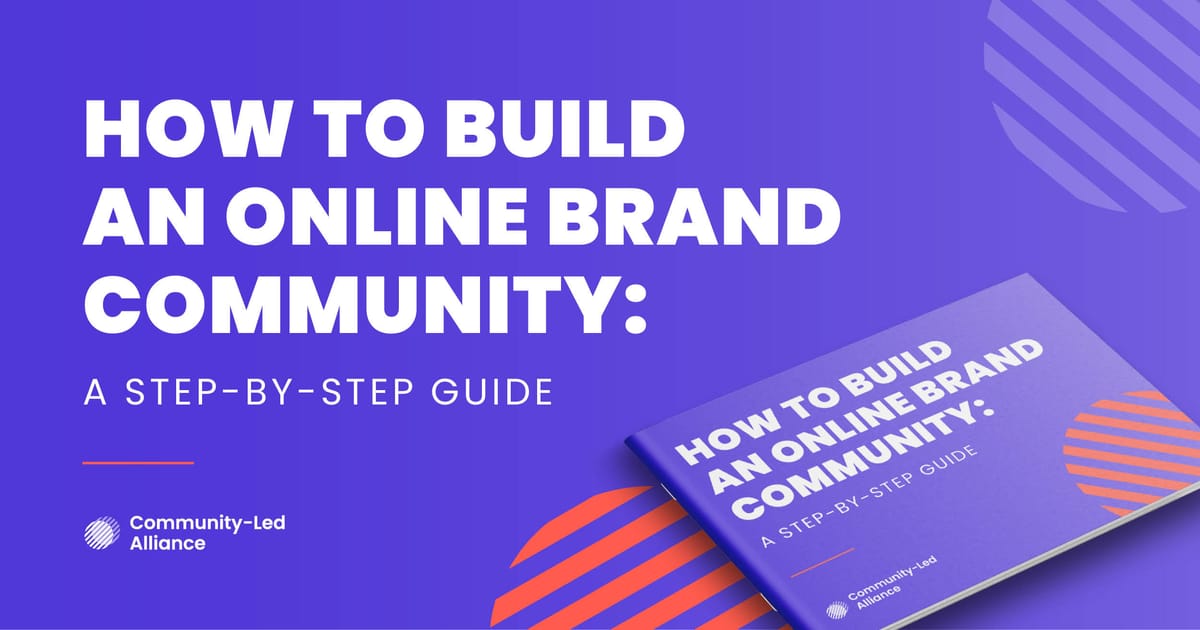In a world where digital is king, and virtual interactions are replacing more and more face-to-face connections, the importance of emotional bonds within a community cannot be overstated.
Emotional connections are the backbone of a community, enriching member engagement and creating a sense of belonging. These connections don’t just enhance a member’s experience, but also contribute to a resilient community structure that can support everyone’s personal and collective goals.
Community managers play a crucial role in cultivating these connections. They do more than just oversee the operational running of a community, they’re the architects of its social fabric. By initiating communication that resonates on a personal level, community managers ensure members feel recognized, valued, and part of the group.
In this article, we’ll explore how community managers can effectively build these crucial emotional connections to ensure a thriving, engaged, and loyal community.
The role of emotional connections in community building
Emotional connections within a community refer to the relationships that go beyond just simple interactions, instead they’re based on shared feelings, empathy, and mutual respect.
These connections stem from common experiences, goals, or values, allowing members to feel understood and supported. In a community, emotional connections are the threads that weave individuals into a tight-knit fabric.
The impact of fostering strong emotional bonds in a community is not to be understanded. Firstly, these connections enhance member engagement. When people feel emotionally invested, their participation becomes more enthusiastic, leading to more active and meaningful contributions to the community.
Emotional investment can turn passive observers into active engagers, eager to participate and drive community events.
Emotional connections can also influence member loyalty. Communities with strong bonds experience lower turnover rates because of that sense of attachment and belonging. This loyalty means more members will become ambassadors for the community, promoting its values and benefits to a broader audience and attracting new members.
So, emotional connections are pivotal in community building. They enrich members' experiences, increase engagement, and cultivate a loyal membership base, all of which are essential for a thriving community. Community managers must prioritize these connections to ensure the longevity and vibrancy of their community.

Strategies for community managers to build emotional connections
Building emotional connections within a community requires intentional strategies and thoughtful execution. Community managers can try various approaches to foster these essential bonds:
Personalized communication
Personalized communication is key to making each community member feel uniquely valued and recognized. This can be done through tailored messages that address members by name and reference their interests or contributions.
For example, sending personalized welcome emails, celebrating birthdays, and responding to member queries with personalized acknowledgments can create a warm, inclusive atmosphere. These types of gestures reassure members that they’re not just numbers in a database but valued individuals within the community.
Creating shared experiences
Shared experiences are the cornerstone of community bonding. Community managers should organize events and activities that not only interest members but also require active participation.
This could include virtual meetups, skill-building workshops, Q&As, and interactive challenges that cater to the common interests of the group. These activities not only keep the community engaged but also allow members to create memories together, strengthening their emotional ties to the group and to each other.
Encouraging member storytelling
Member storytelling is a powerful tool for deepening emotional connections. By inviting members to share their personal stories and experiences, community managers can foster a sense of empathy and understanding among the group.
This could be done through spotlight features in newsletters, guest posts on community blogs, or story-sharing sessions during meetings. When members see their experiences reflected and valued by others, it reinforces their emotional investment in the community.
Acknowledging and celebrating contributions
Recognition of members' efforts plays a crucial role in sustaining community engagement and building loyalty. Community managers can acknowledge and celebrate contributions by implementing recognition programs such as 'Member of the Month' or giving shout-outs in community forums or on social media.
Recognizing members not only motivates them to continue contributing but also shows the community that their efforts are appreciated, fostering a positive and supportive environment.
Facilitating peer-to-peer connections
Finally, facilitating peer-to-peer connections is essential for building a self-sustaining community. Providing tools and platforms that enable members to interact without constant moderation or intervention can help forge stronger bonds.
This could include dedicated Slack channels, specialized forums, or creating interest-based subgroups. These platforms allow members to find and connect with others who share similar interests, leading to more organic, meaningful relationships within the community.
Case studies: examples of building emotional connections
There are plenty of big brands that have done a terrific job of fostering an emotional connection with their audience to ramp up customer loyalty. Here are just some examples:
Apple
Apple has truly mastered building an emotional connection with their audience, connecting it directly to a sense of belonging and identity. They’re cultivated a space for their audience where owning an iPhone is not just about functionality, but about being part of a tribe that all share the same values when it comes to innovation and design.
Dove
Dove taps into emotional connections not with their products but with their messaging. Campaigns like Dove’s Real Beauty Campaign aimed to challenge beauty standards and celebrate diversity. This level of authenticity helped them to build an emotional connection and promote loyalty among its audience.
Amazon
A big part of forging an emotional connection is about treating people as individuals with personalized messaging and recommendations, and no company does this better than Amazon. Its recommendation engine suggests products to each individual, really tapping into that want for personalized service.
Benefits of building emotional connections
Cultivating emotional connections within a community yields many benefits that not only enhance the immediate environment of the community but also contribute to its long-term success and growth.
Here are some of the key advantages:
Increased member retention
Communities that create deep emotional connections among their members typically see higher retention rates. When members form bonds that make them feel valued and part of a larger group, they are more likely to remain active and engaged.
Emotional investments create a sense of belonging that discourages members from leaving, as they would miss the relationships and the community environment they have come to know.
Enhanced community reputation leading to growth
A strong, emotionally connected community often develops a positive reputation that can attract new members. Word of mouth is a powerful tool, and as current members share their positive experiences with others, more will join.
Also, when a community is known for its warm, welcoming, and supportive environment, it stands out among the plethora of options people have for social engagement today. This reputation not only draws new members but also opens doors to partnerships, sponsorships, and other growth opportunities.
Stronger member advocacy and loyalty
Emotionally connected members are more likely to become advocates for the community. Their loyalty translates into active promotion and defense of the community and its values, both online and offline.
These members often take initiative in various community activities, from organizing events to welcoming new members, and they play a crucial role in shaping the community’s culture.
Challenges and considerations
While building emotional connections within a community has a number of benefits, community managers also face challenges that they’ll need to face.
One of the most significant challenges in any community is the diversity of its members, which include varying backgrounds, values, needs, and expectations. As a community grows, so too does the complex variety of needs.
Community managers need to be able to understand and integrate these differences to foster an inclusive environment. This means implementing a flexible community style, diverse programming, and multiple engagement strategies to cater to various member segments so everyone feels valued and understood.

As the community grows, maintaining the same level of personalization that helped create those strong bonds becomes more difficult. This is another challenge community managers must tackle.
Scaling a community effectively while keeping the interactions personal and meaningful requires strategic planning and possibly the adoption of technologies like CRM systems or AI-driven tools to help automate personalized communications.
Community managers must continually innovate and adapt their strategies to ensure that growth does not dilute the personalized experience that members cherish.
Another challenge is dealing with conflict. Conflict is inevitable in any group setting, especially as the community grows and diversifies. Managing these conflicts without letting them undermine the emotional connections that have been built is crucial.
Effective conflict resolution strategies that promote understanding and reconciliation are essential. This means setting clear guidelines for interactions within the community, providing ways to give feedback and air grievances, and even mediating disputes to prevent escalation. It’s important that community managers are proactive and skilled in conflict resolution to maintain harmony and trust amongst members.
These challenges require thoughtful consideration and adept management. Community managers must continuously evolve their approaches, utilizing feedback and adapting to changing dynamics to foster a thriving, emotionally connected community.
Final thoughts
The importance of building emotional connections within a community cannot be overstated. These connections form the bedrock of member engagement, retention, and loyalty, transforming a group of people into a vibrant and cohesive community.
But building and maintaining these connections require ongoing effort and innovation, especially as the community grows and diversifies.
By embracing the role of a facilitator and nurturer of relationships within the community, community managers can ensure the community thrives, and is ever-growing, bound together by the powerful emotional connections they helped to build.
Download your free copy of our playbook to get actionable insights, expert advice, and a step-by-step approach that'll boost your community building.






